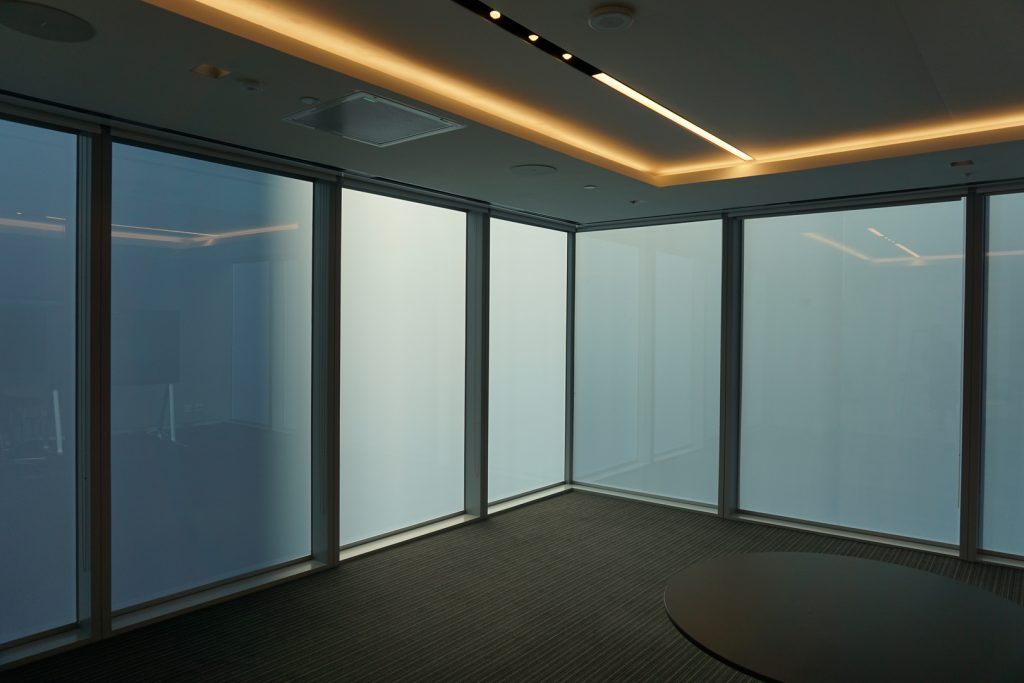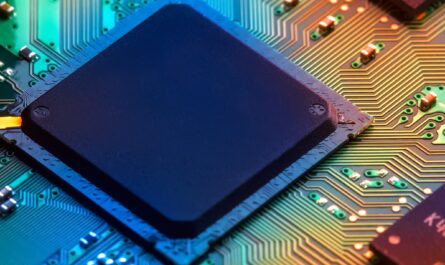Electrochromic glass is a smart material that has the ability to change its light transmission properties when small amount of voltage is applied to it. Basically, it is a special type of glass that undergoes reversible optical changes when small voltage is applied across its surface. This technology enables glass to change from transparent to various shades of dark within seconds.
How Electrochromic Glass Works
Electrochromic glass consists of multiple thin layers of materials deposited between two pieces of glass. The key components includes an electrochromic material layer, an electrolyte layer and a counter electrode layer. When voltage is applied, ions from the electrolyte layer are transferred between the electrochromic layer and counter electrode layer. This causes the electrochromic material to change its molecular structure and hence its optical properties. In transparent state, the glass lets maximum light pass through it. When a small voltage is applied, the glass darkens and allows less light and heat to pass through its panes. Removing the voltage reverses the process and the glass returns to transparent state.
Applications of Electrochromic Glass
One of the major applications of Electrochromic Glass is in architectural and construction sector where it can dynamically control solar heat and glare entering buildings. By switching between light and dark states automatically or manually, it provides benefits like:
– Temperature Control: Electrochromic glass aids in passive heating and cooling of buildings by controlling amount of solar heat gain. This reduces energy used for heating and cooling.
– Glare Control: In offices and other commercial buildings, it prevents glare from sunshine on computer screens by darkening glass surfaces. This improves occupant comfort.
– Privacy Control: The switchable opacity feature of this glass allows glass partitions and windows to change from transparent to frosted for privacy when needed.
– Display & Showcase: Museums and retail stores are using electrochromic glass innovatively for interactive displays and product showcasing where transparency can be altered electronically.
Electrochromic glass is also finding increasing usage in automotive industry for applications like rear-view mirrors, sunroofs and windshields. The smart glass offers functions like automatic dimming to reduce glare, enhancing driver comfort and safety. Some other notable uses include aircraft windows, smart home appliances and electrochromic materials.
Advantages of Electrochromic Glass
The key advantages of electrochromic glass over traditional glazing include:
– Active Control: Traditional solutions like blinds, curtains or tinted glass are manually controlled. Electrochromic glass allows automated adjustment of light/heat based on sensing of external conditions.
– Switching Speed: It can transition between clear and dark states within few seconds which is much faster than manual controls. This ensures quick response to changing sun angles and indoor light needs.
– Durability: Being inorganic solid state materials, electrochromic coatings are expected to withstand millions of switching cycles with no degradation in performance over decades of use.
– Uniform Tinting: The electronically induced tint is consistent across the entire glass surface. This provides an even aesthetic look compared to manually adjusted blinds/curtains.
– Safety: The automated operation eliminates risks of accidental cuts or injury associated with manual glazing controls. This is particularly important in applications like aircraft and vehicle windows.
– Energy Efficiency: By dynamically optimizing solar heat gain and glare based on external conditions, buildings integrated with electrochromic glass can achieve significant reductions in annual energy use for heating, cooling and lighting.
Challenges in Adoption of Electrochromic Glass
Despite the clear advantages, some challenges are currently limiting wider adoption of electrochromic glass technology:
– Higher Capital Cost: The coatings and electronics required for electrochromism make the initial material and installation cost of these glazings higher than conventional options. However, the operational cost savings often offset the higher upfront costs over time.
– Durability in Harsh Environments: Ensuring consistent performance of thin film coatings over decades of use under varying outdoor weather conditions is an engineering challenge. Improved coating designs are required for applications like fagades.
– Control Systems Integration: Seamless integration of electrochromic glass with smart control systems for automated adjustment based on sensors continues to require refinement. Standardization of control protocols would aid broader acceptance.
– Manufacturing Scalability: Mass production capabilities need to catch up with the rapidly growing market demand. Larger window sizes also present engineering hurdles in coating uniformity and edge sealing.
With continued technology progress addressing existing challenges, the electrochromic glass market is forecasted to grow substantially in the coming decade across major global regions. As a smart material that can adapt to changing conditions autonomously, it has potential to revolutionize building design philosophies from static to responsive. Wider adoption of electrochromic solutions could deliver tangible benefits in terms of energy savings, occupant well-being and sustainable architectural aesthetics.
*Note:
1. Source: Coherent Market Insights, Public sources, Desk research
2. We have leveraged AI tools to mine information and compile it



